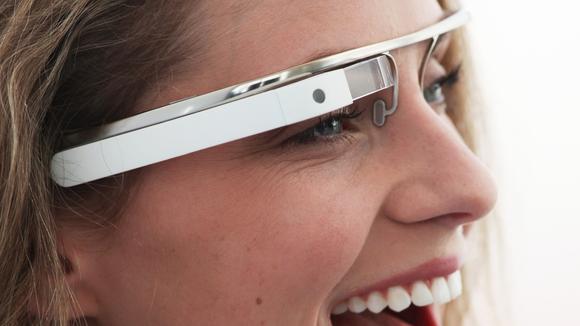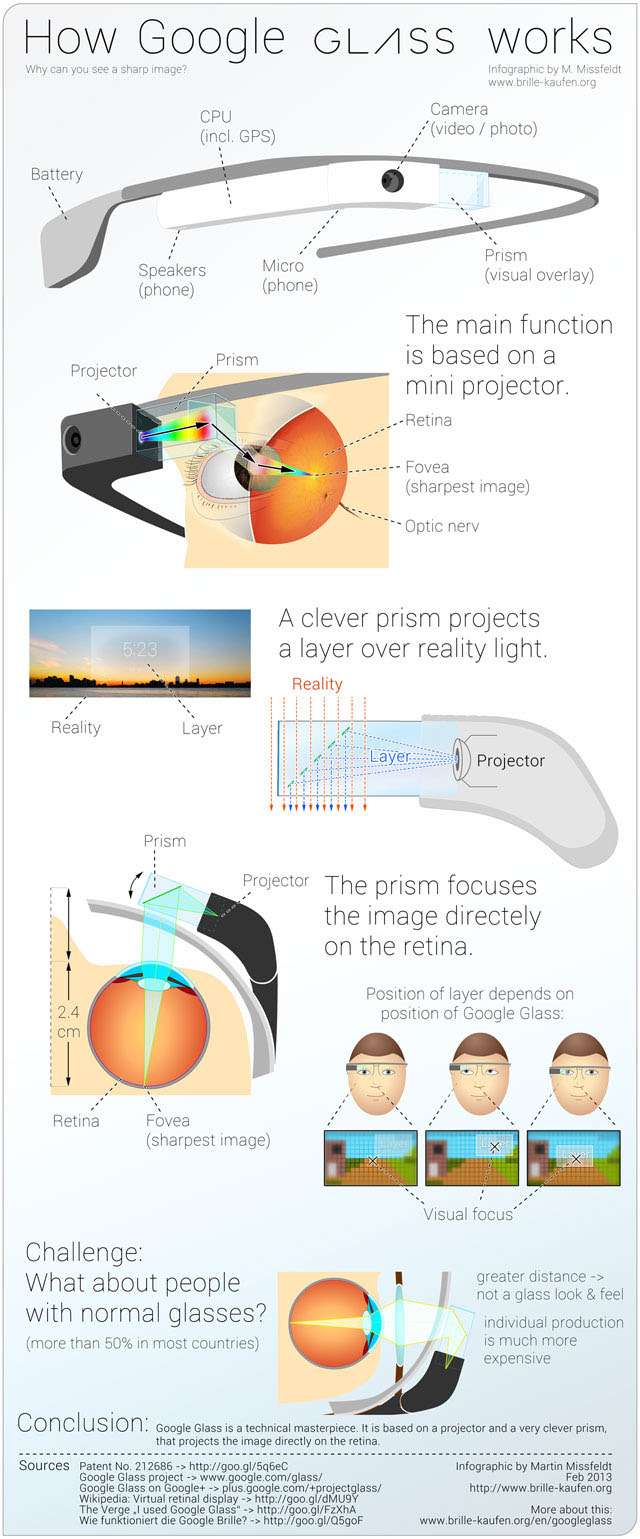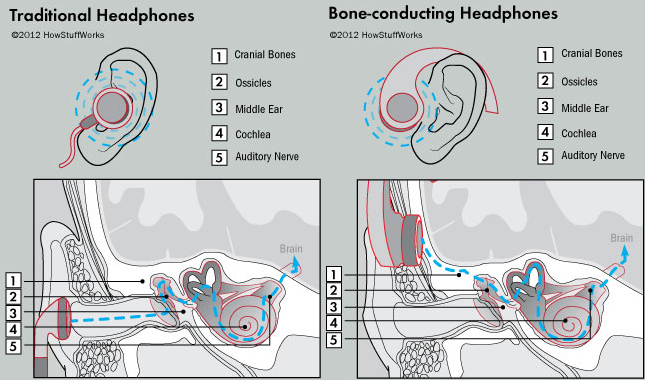
Google released the Google Glass trailer on April 4, 2012. Just over a year later, the first Google Glass ‘explorers’ have already been sending in their reviews for the crazy new device. Some people love it and others don’t see the point of it.
But regardless of how you feel about Google Glass and a future in which everybody walks around talking to their sunglasses, the technology behind Google Glass is actually quite cool – and more complex than many people realize.
How it works
Project Glass features the following specs:
-HD display that resembles viewing a 25 inch HD monitor from 8 feet away
-12GB available storage
-5MP camera that can shoot 720p video
-Wi-Fi 802.11 b/g
-Bluetooth connectivity
The software: Google Glass is powered by Android. You will need a smartphone with Android 4.0.3 Ice Cream Sandwich or higher in order to synch Google Glass to your smartphone. You will also need to install the ‘My Glass’ app on your Android smartphone. My Glass comes bundled with Google Glass and handles communication between your smartphone and the glasses.
The display: This part might freak you out, but Google Glass doesn’t display a screen in front of your eye – it displays a screen in your eye. Yes, Google is now in your head. Since focusing on objects at very close range is difficult for the eye, Google beams images directly onto the retina at the back of your eye. See below for a full explanation of how the Google Glass display works:

Audio: Google Glass doesn’t come with speakers. Instead, it comes with ‘bone-conducting’ headphones. What on earth does that mean? Bone conduction headphones rest against the front of the ear and transmit vibrations through the bones into your inner ear. The crazy thing is that it all sounds the same to your brain. The obvious advantage of this is that you don’t get hit by traffic when you’re walking around because your main ear canal is wide open.

Yes, there are buttons and a touchpad: Google Glass is designed to be a primarily hands-free device. But there is still a small capture button on the right hand side of the headset. There’s also a miniature touchscreen on that side of the device that you can use to navigate through Glass’s settings, functions, and other options. When you press the ‘capture’ button, Google Glass will automatically begin filming a 10 second video.
Voice commands: If you bothered watching the video up above, then you know that Google wants users to primarily control the device via voice commands. Sure, the early adopters of Google Glass are going to look mentally ill as they walk around muttering to themselves wearing bizarre-looking glasses. But eventually, voice commands will be the norm. The point is, you can simply say ‘Ok, Glass’ to initiate any command with your headset. It’s that easy.
Google Now and Timeline cards: Google Now is one of the hottest new Android features available today. It’s also a bit creepy how much it can learn about you. Google Now knows my favorite hockey team and it knows where I live and when I like to check the weather – even though I’ve never specifically told Google Now any of that. Google Now is like Siri on ADHD medication, and it is fully integrated with Google Glass.
Cool extra features:
-You can turn off the display and then tilt your head to wake it up again (easier than pressing the touchpad)
-A timeline which highlights all of your activities throughout the day in chronological order, like a fully-integrated life calendar
-Google+ integration for those who actually use Google+
Google Glass won’t be available to us normal people for another year or so. Until then, we’ll just have to read some of the early reviews by Google Glass explorers.
